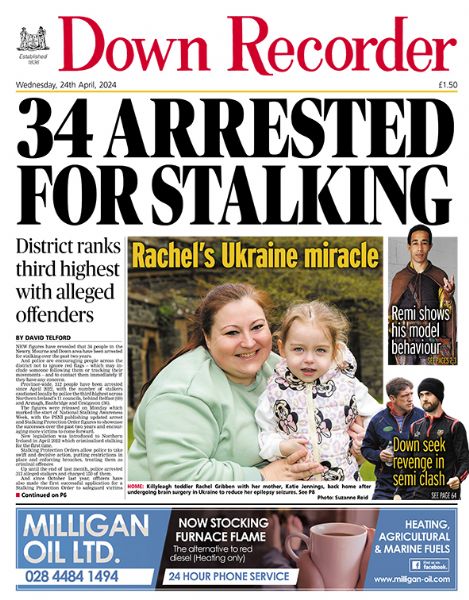Ombudsman finds collusion in Loughinisland murders
Ombudsman finds collusion in Loughinisland murders
9 June 2016
COLLUSION was a “significant feature” of the Loughinisland murders according to Police Ombudsman.
In a long-awaited report published this morning, Dr Michael Maguire said there is clear evidence the guns used in the murders of six men in June 1994 were part of a consignment brought into Northern Ireland by Loyalists. Some of those Loyalists were either police informants or were under surveillance.
The use of informants by the police forms a central part of the report with strong claims that Special Branch officers did not share information with local police officers or detectives investigating serious.
“There was a ‘hear no evil, speak no evil, see no evil’ approach to the use of some informants which potentially frustrated the police investigation,” said Dr Maguire.
He found that RUC Special Branch did not share information about the activities of an emerging Loyalist gang in South Down which claimed the lives of two other men in separate attacks.
The Ombudsman said there was a failure to pass on relevant information about this gang in order to protect informants and that had CID detectives been given this information they may have been able to successfully prosecute some of those involved in the Loughinisland murders, before the attack on the Heights Bar.
Dr Maguire said one person initially suspected of involvement in the Loughinisland shootings was an RUC informant at the time of the attack.
However, Dr Maguire said there is no evidence the security forces were aware the UVF was planning to mount an attack in Loughinisland.
He also said there were many local officers within the RUC and PSNI who worked “tirelessly” to bring those responsible for the Loughinisland attack to justice.
Despite this Dr Maguire’s report lists a number of “fundamental failings” in the investigation, including the forensic strategy, enquiries to find out more about the getaway car and those connected to it, enquiries to find witnesses and the strategy for making arrests.
The Ombudsman established that within 24 hours of the attack, Special Branch provided detectives with the names and details of people they believed responsible.
However, there was then a significant delay in arresting the suspects, with the result that evidential opportunities were lost.
The report also found that investigative opportunities were undermined by the way police conducted inquiries into the getaway car and those connected to it.
Dr Maguire said he has taken the definition of collusion to be that given by Justice Smithwick, the Irish judge who conducted an investigation into allegations of Garda collusion with the IRA in the murder of senior RUC officers Harry Breen and Bob Buchanan.
“Many of the individual issues I have identified in this report, including the protection of informants through wilful acts and the passive turning of a blind eye; fundamental failures in the initial police investigation and the destruction of police records, are in themselves evidence of collusion as defined by Justice Smithwick,” said the report.
“When viewed collectively, I have no hesitation in saying collusion was a significant feature of the Loughinisland murders.”

